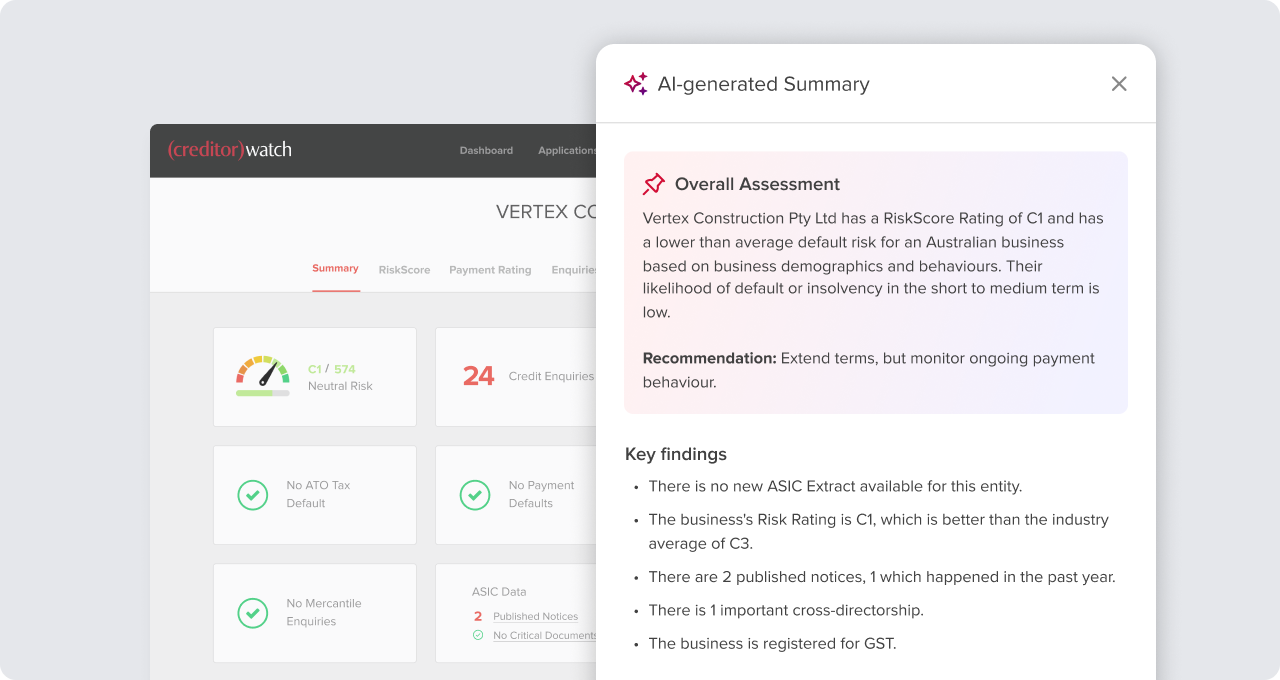
The trading environment in Australia throughout 2022 has seen some unprecedented challenges. As rates of insolvency have risen across numerous industries, it is more important than ever to ensure appropriate risk mitigation strategies are in place to protect both your business and its assets. Understanding how to best make use of the Personal Property Securities Register (PPSR) can be a useful tool as part of this strategy.
The outlook for medium to large business is understandably a nervous one, considering the shortages of raw materials, coinciding with a national shortage of skilled labour, and rising interest rates elevating the cost of debt. The Business Risk Review by CreditorWatch supports this wariness, with recent data illustrating that defaults have risen over the past month by 16 per cent. As observed by CreditorWatch’s Chief Economist, Anneke Thomson, “This (perfect storm) means it is now highly likely those businesses that have been trading unprofitably since 2020 will now have to face the reality of their situation”.
Even if your revenue streams remain relatively stable, any increased risk of insolvency for your trading partners will quickly increase your own risk exposure. Businesses need to get ahead of the curve, placing infrastructure that creates security and certainty in such an unstable environment. One such tool that can assist business owners, if understood and utilised correctly, is the PPSR.
Navigate economic uncertainties with the PPSR
The PPSR is an ‘online government noticeboard of security interests in personal property’. In other words, it is a publicly available database to create, manage and/or check, any security interests on anything defined as personal property. A security interest is a type of right on one or more items – applying to relevant agreements such as a hire-purchase agreement, or secured car loan – with assurances made upon the repayment of debt, or a corresponding payment obligation.
When a security interest is registered in an asset on the PPSR correctly, it formalises your business as a secured creditor on that asset in the event of a trading partner’s insolvency. This increases the likelihood of protecting your business from lost funds as you are a high priority creditor, and therefore far more likely to either recoup your goods or be compensated accordingly. If your security interest is not registered on the PPSR, you will fall down the hierarchy as an unsecured creditor. You may potentially be at risk of default due to the decreased likelihood of fair compensation, and this may jeopardise your business. Any other external written agreement, or retention of title clause, may not be enough to protect you on its own.
If you’re selling goods on retention of title terms, or consignment, or leasing or hiring out equipment for greater than 2 years – then the PPSR is imperative for best practice. It provides assurances against the loss or sale of the goods in question, protecting your bottom line. Considering the heightened cost of doing business within Australia, if your security interests are not registered with the PPSR, your business may struggle to recover if your goods are sold to repay other creditors.
Further to this, a PPSR check allows your business to do the appropriate due diligence prior to the purchase of second hand goods to find out if they already have existing debt or security interests registered against them. Should you fail to conduct a PPSR search, you may be at risk of purchasing an item liable for repossession, due to the default, insolvency or otherwise, of previous ownership. Not only do you stand to lose the item, you may also fail to recoup the money spent. An initial PPSR check can alleviate much of this uncertainty.
How to manage risks with the PPSR
By both registering your personal security interests, as well as performing a security interest check on any relevant purchases, your business will be utilising the PPSR most effectively as a risk management tool. It elevates your importance as a secured creditor, and mitigates against exposure to pre-existing debt, creating a business asset safety blanket of sorts. With rising insolvencies, it may provide a level of assurance against accompanying rises in defaults, allowing you to recoup as much as possible from bad-credit scenarios (or avoid them entirely).
However, the PPSR has been known to be complex to self-navigate and manage via the Australian Financial Security Authority (AFSA) portal. With an abundance of technical information and regulatory infrastructure, some businesses end up forgoing the registration of appropriate items out of sheer frustration. More often than not, they complete their registrations without realising they’ve made errors, rendering these registrations void. This leaves them exposed, which is especially risky during times of such tight margins.
Thankfully, PPSRLogic, CreditorWatch’s award-winning platform, simplifies both PPSR registrations and PPSR checks. It streamlines these processes in order to empower your business to make full use of the PPSR as a risk management service. All registrations can be completed on a single page. PSPRLogic also integrates with our customer onboarding tool ApplyEasy, to ensure you don’t miss a registration.
A major benefit of PPSRLogic is that it identifies and rectifies any instances of missing or misfiled data, such as incorrect ACNs, ABNs or address information, in order to ensure the highest levels of accuracy and compliance. Without this platform to simplify the registration process, it can be considerably more difficult to ensure that you are reaping the benefits of the PPSR to their fullest extent.
Despite current challenges in the economy, there are proactive steps that Australian business can take to protect their assets and mitigate their exposure to credit risk. To find out more about PPSRLogic, or to see how the rest of our products might assist in protecting your business, contact us today.

Get started with CreditorWatch today
Take your credit management to the next level with a 14-day free trial.

